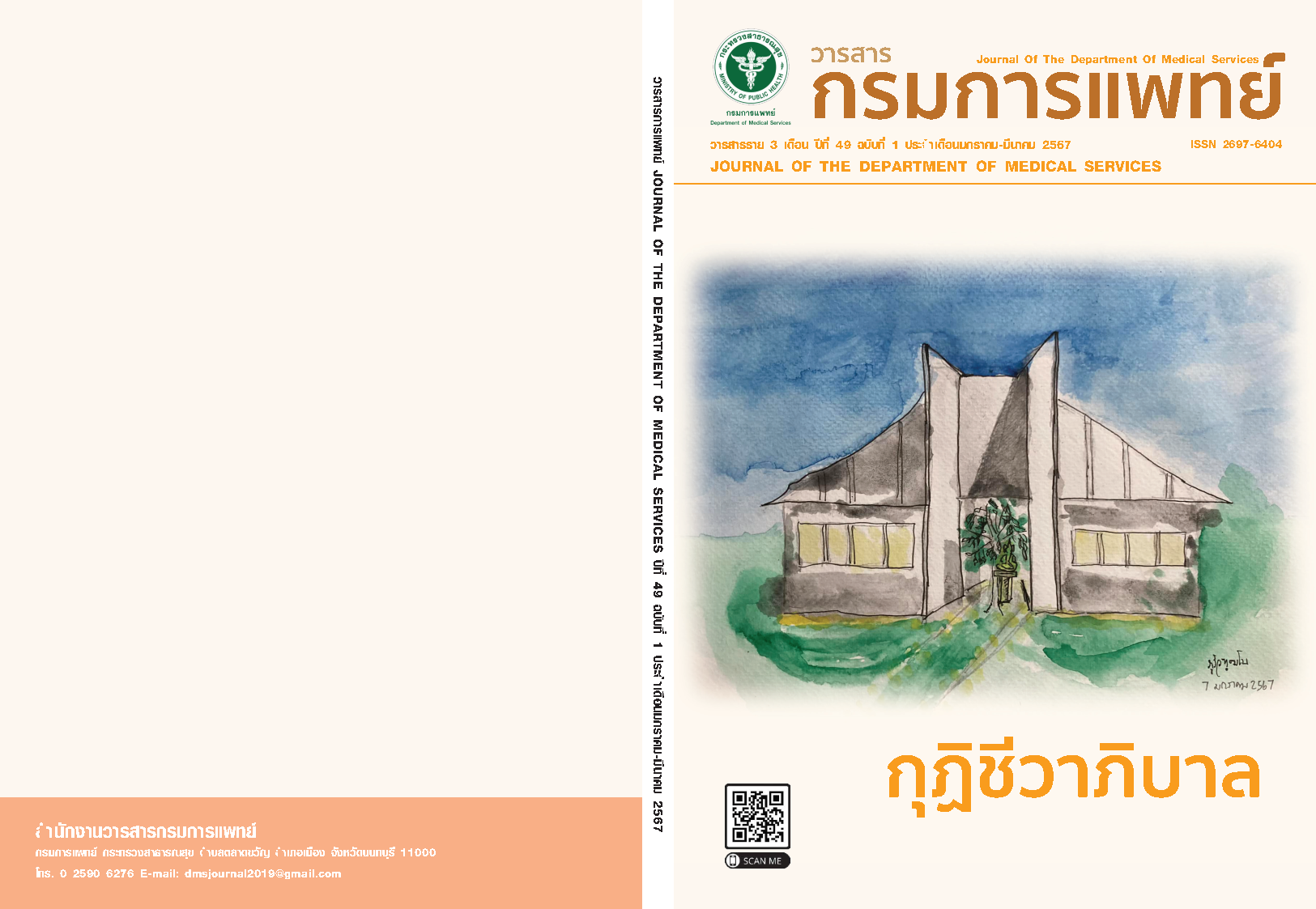Factors Causing Allergies from Non-ionic Contrast Media Agents in Computed Tomography
Keywords:
Contrast media agents, Computed tomography Scan (CT scan), Age groups, GenderAbstract
Background: Injecting contrast media into the body for computed tomography increases the clarity of organs, helping to make the diagnosis more accurate. This may cause allergic reactions to contrast media agents. The researcher was therefore interested in studying the factors of allergic reactions to non-ionic contrast media. Objective: This prospective study aimed to analyse prevalence and risk factors in non-ionic contrast associated allergic reactions in patients. Method: The sample of 400 patients under computed tomography was collected from a record database between April 2023 - July 2023. Data were analysed using descriptive statistics, numbers, percentages. The research tool was computed tomography examination was collected from a record database (sex, age). Factors determining association between allergic and non-ionic contrast were collected, those include high creatinine or low eGFR, hypertension, asthma, seafood allergies, history of contrast media allergy. Results: It was found that there were more female patients than males in both age groups. Only in the age group of 46-70 years. Data on risk factors found that hypertension accounting for 15.0%, had an allergic reaction to contrast media agents accounting for 2.25%, high creatinine or low eGFR accounting for 1.0%, seafood allergy accounting for 0.5%, respectively. While males were found to have hypertension accounting for 7.0%, high creatinine or low eGFR accounting for 0.5%, allergic to seafood accounting for 0.25%, ever allergic to contrast media agents accounting for 0.00%, respectively. Conclusion: The results of the study found that among the 5 patients, accounting for 1.25%, they were allergic to the contrast media agents which no risk factors mentioned above were found. As for the patient who was allergic to contrast media agents, 1 patient, accounting for 0.25%, had hypertension risk factors out of 90 hypertensive patients, all 6 of whom were patients in the age group of 46 - 70 years.
References
Jenjitranant P, Kaewlai R. Iodinated contrast medium in clinical neurology practice: all questions answered. J Thai Stroke Soc 2017;16(1):23-43.
Singh J, Daftary A. Iodinated contrast media and their adverse reactions. J Nucl Med Technol 2008;36(2):69-74.
Yamane T. Statistics: an introductory analysis. New York: New York: Harper & Row; 1973.
Janpanich S. Patients diagnosis using computerized tomography (CT) and magnetic field imaging (MRI) Care. Siriraj Med J 2016;3(2):149-58.
Kanlayanawut N. Guidelines regarding monitoring of adverse reactions not related to the kidneys or an allergy to radiopaque substances. [Internet].2022 [cited 2023 Sep 18]. Available from: https://www. pranangklao.go.th/webpnk60/images/Appmanual/ am-70.pdf
Lee SY, Kang DY, Kim JY, Yoon SH, Choi YH, Lee W, et al. Incidence and risk factors of immediate hypersensitivity reactions associated with low-osmolar iodinated contrast media: a longitudinal study based on a realtime monitoring system. J Investig Allergol Clin Immunol 2019;29(6):444-50.
Downloads
Published
How to Cite
Issue
Section
License
Copyright (c) 2024 Department of Medical Services, Ministry of Public Health

This work is licensed under a Creative Commons Attribution-NonCommercial-NoDerivatives 4.0 International License.
บทความที่ได้รับการตีพิมพ์เป็นลิขสิทธิ์ของกรมการแพทย์ กระทรวงสาธารณสุข
ข้อความและข้อคิดเห็นต่างๆ เป็นของผู้เขียนบทความ ไม่ใช่ความเห็นของกองบรรณาธิการหรือของวารสารกรมการแพทย์



